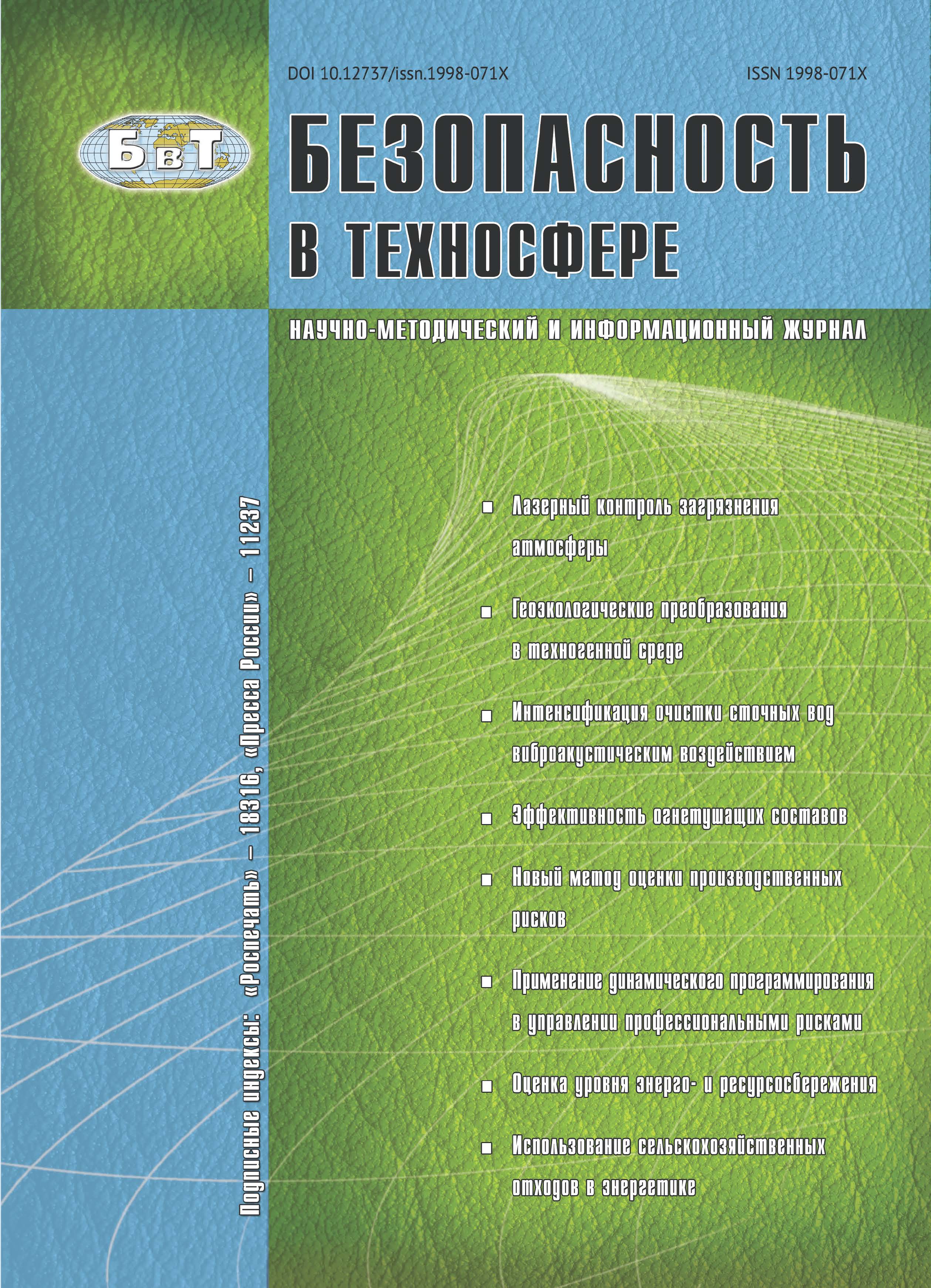Russian Federation
Russian Federation
The current period of society social and economic development is characterized by an increasing number of technosphere objects for various functional purpose. The study subject is emergency situations related to fires at Baikal region’s technosphere objects, which types and number have been presented. Based on fire monitoring, and using methods of social and mathematical statistics, in this paper have been presented indicators for fires effect in general, as well as on all basic types of region’s technosphere objects: in amount of fires, di-rect damage, death and injury of people, destroyed buildings. Based on existing methods and data from analytical studies of fires, an assessment of such integral fire risks as fires break-out, buildings destruction, direct material damage, death and injury of people on the basic types of Baikal region’s technosphere objects has been given for the first time. It has been established that the current state of technosphere objects’ fire safety does not meet the regulatory requirements.
technosphere objects, fires effect, integral fire risks
1. Akat'ev V.A. Proizvodstvennaya bezopasnost' [Industrial safety]. Moscow: RGTU Publ., 2011. 820 p. (in Russian).
2. Garmyshev V.V., Dubrovin D.V. Sovremennye problemy pozharnoj bezopasnosti na regional'nom urovne [Modern problems of fire safety at the regional level]. ΧΧI vek. Tekhnosfernaya bezopasnost' [ΧΧI century. Technosphere safety]. 2019, V. 4, I. 1, pp. 38-61. (in Russian).
3. Garmyshev V.V., Timofeeva S.S., Kuz'micheva E.A. i dr. Pozharnaya bezopasnost' zdanij i sooruzhenij v Ir-kutskoj oblasti [Fire safety of buildings and structures in the Irkutsk region]. ΧΧI vek. Tekhnosfernaya bezopas-nost' [ΧΧI century. Technosphere safety]. 2017, V. 2, I. 4, pp. 86-96. (in Russian).
4. Gosudarstvennyj doklad \'\'O sostoyanii i ob ohrane okruzhayushchej sredy Irkutskoj oblasti v 2018 godu\'\' [State report "On the state and protection of the environment of the Irkutsk region in 2018"]. Irkutsk: \'\'Megaprint\'\' Publ., 2019. 307 p. (in Russian).
5. Geograficheskaya enciklopediya Irkutskoj oblasti. Obshchij ocherk [Geographical encyclopedia of the Irkutsk region. General outline]. Irkutsk: Institut geografii im. V.B. Sochavy SO RAN Publ., 2017. 336 p. (in Russian).
6. Timofeeva S.S., Garmyshev V.V. Ocenka tekhnogennyh i pozharnyh riskov Bajkal'skogo regiona [Assess-ment of technogenic and fire risks of the Baikal region]. Irkutsk: IrNITU Publ., 2019. 184 p. (in Russian).
7. Materialy v gosudarstvennyj doklad \'\'O sostoyanii zashchity naseleniya i territorij Irkutskoj oblasti ot chrezvychajnyh situacij prirodnogo i tekhnogennogo haraktera\'\'. Statisticheskie sborniki [Materials in the state report "On the state of protection of the population and territories of the Irkutsk region from natural and man-made emergencies". Statistical compilations]. Irkutsk: GU MChS Rossii po Irkutskoj oblasti Publ., 2013 - 2018. (in Russian).
8. Brushlinskij N.N., Klepko E.A. K voprosu o lokal'nyh i integral'nyh riskah [On the issue of local and integral risks]. Vestnik Akademii GPS MChS Rossii [Bulletin of the Academy of State Fire Service of the EMERCOM of Russia]. 2007, I. 6, pp. 93-96. (in Russian).
9. Brushlinskij N.N., Sokolov S.V. Rol' statistiki pozharov v ocenke pozharnyh riskov [The role of fire statistics in assessing fire risks]. Problemy bezopasnosti v chrezvychajnyh situaciyah [Problems of safety in emergency situations]. 2012, I. 1, pp. 112-124. (in Russian).
10. Brushlinskij N.N., Sokolov S.V. Individual'nyj pozharnyj risk: ponyatie, vychislenie [Individual fire risk: concept, calculation]. Moscow: VI-NITI Publ., 2013, I. 5, pp. 30-41. (in Russian).






